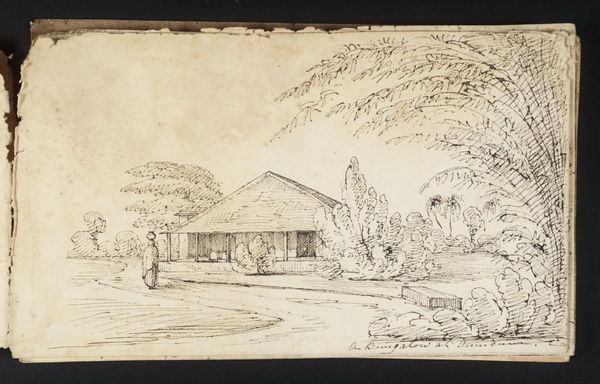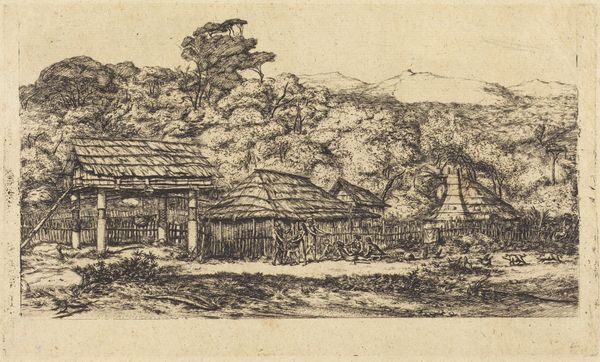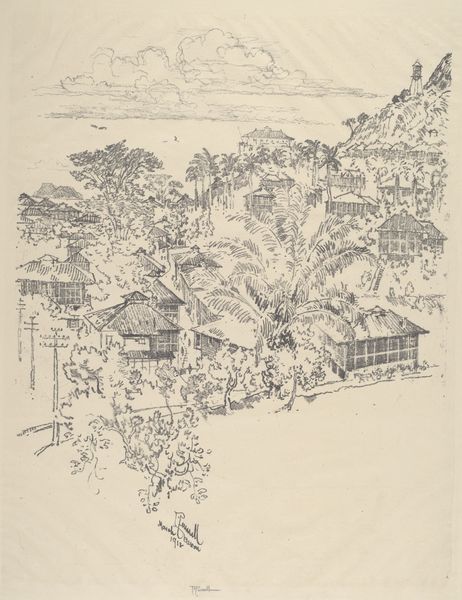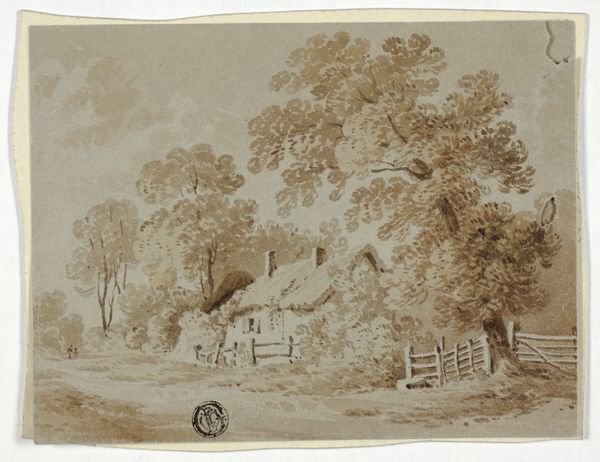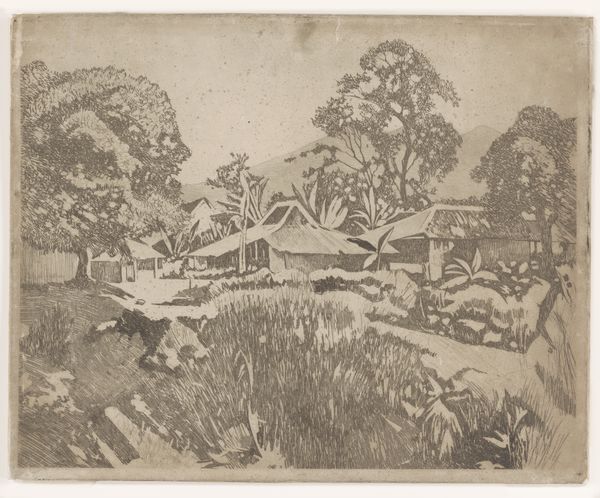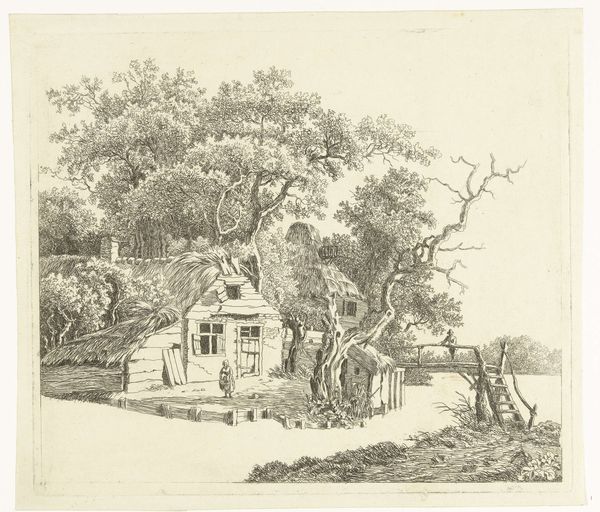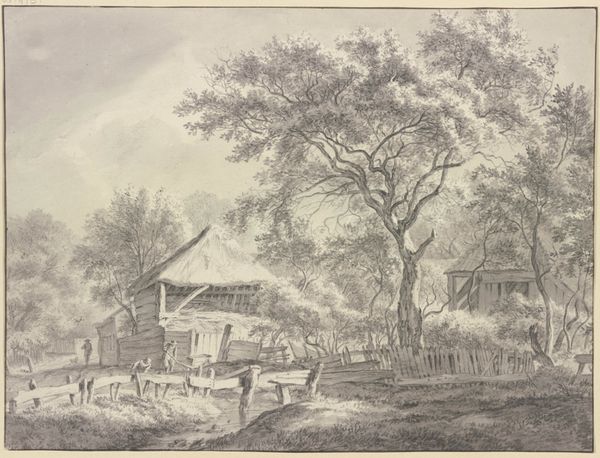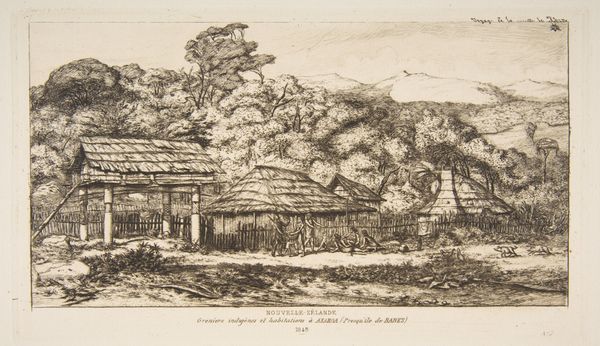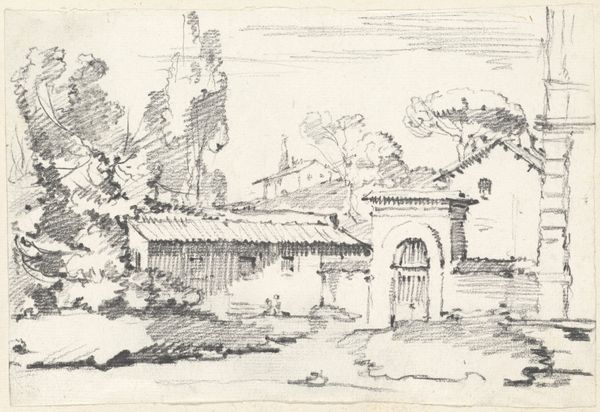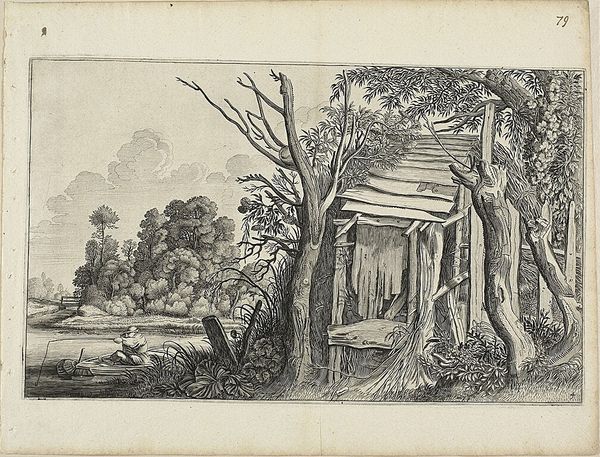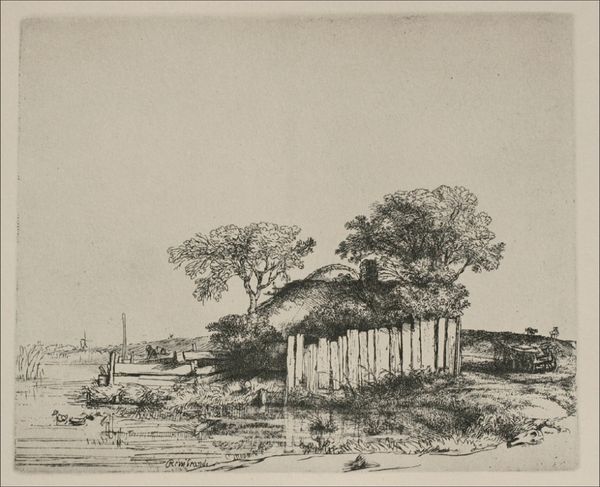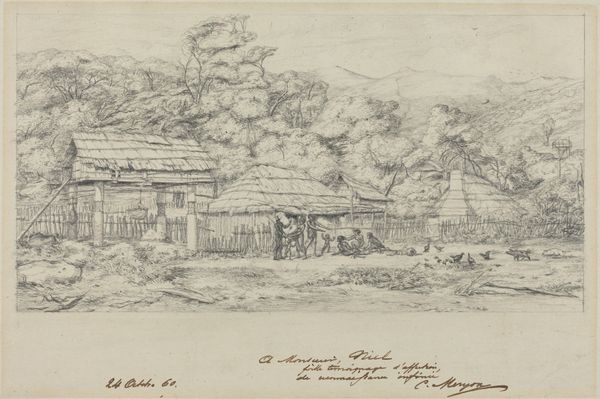
drawing, print, etching, ink
#
drawing
# print
#
pen sketch
#
etching
#
pencil sketch
#
landscape
#
etching
#
ink
#
romanticism
Dimensions: 198 mm (height) x 251 mm (width) (billedmaal)
Curator: Here we have "A Bathhouse at Liselund on Møn," created by Søren L. Lange in 1805. It's an etching and ink drawing depicting a serene landscape. Editor: It's quite tranquil, isn’t it? A certain… fragile beauty about the whole scene. The lines are so delicate, the tonal range rather limited... it’s very picturesque. Curator: Absolutely. Now, consider this within its historical context: Romanticism was burgeoning, valuing subjective experience and the sublime power of nature. This piece reflects those sensibilities, particularly within the framework of class and access. The landscape as something both to behold and to exploit. Editor: It's the bathhouse itself I keep coming back to, its physical construction. Look at how it contrasts with the nature surrounding it: the simple brickwork, the way the thatched roof was probably produced… What labour went into making such a relatively humble structure a place of leisure for wealthy patrons? Curator: A keen observation. Liselund was indeed an estate, and this bathhouse, while seemingly simple, speaks volumes about leisure and privilege. Think of the power dynamics at play. The aesthetic enjoyment of this constructed landscape relies on those very materials and the work that provided it. It even brings to mind questions of who had access to such refined personal hygiene, in a time with limited access to clean, potable water. Editor: Exactly. Even the composition feels intentional. The bathhouse is neatly framed, carefully situated between natural resources, and human construction of the space. Curator: And consider the symbolic weight. Water, often linked to purification and rebirth, features prominently with the waterfall at the front left of the scene. The social connotations within these serene spaces… the ways it’s tied to gender and to hygiene, creating these new social distinctions in the Danish Golden Age. Editor: By foregrounding these things, perhaps Lange invites us to see how social and physical landscapes co-exist and define each other. I think too often such images are viewed only through a superficial idea of idyllic landscapes. Curator: I agree. And bringing those themes forward, we can challenge how we understand Romanticism, especially concerning social inequities of the early 19th century. Editor: Examining materials, manufacture, labor, and its place within a romanticized landscape... It enriches the reading. Curator: Precisely, and in so doing we expand art history beyond aesthetic appreciation and situate it within power and class analysis.
Comments
No comments
Be the first to comment and join the conversation on the ultimate creative platform.
